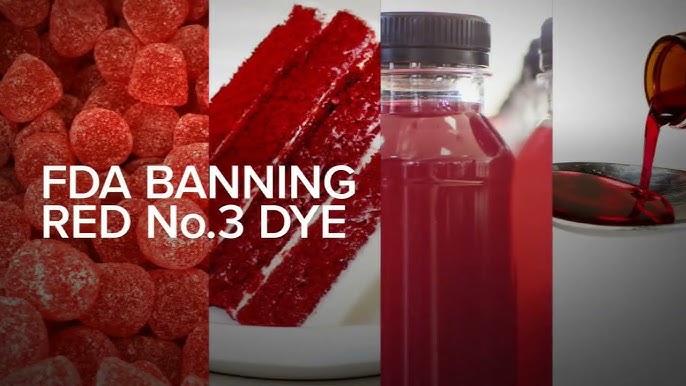The recent action by the FDA concerning refusing food products to contain Red Dye No. 3 is a clear triumph for consumers and their safety.
Used in candies and processed snacks and drinks, this synthetic dye has raised alarms for disturbing health impacts for several decades.
We have public health groups to thank for fighting for this ban over the years so that everyone’s families can be healthier now.

Health Risks of Red Dye No. 3
Red Dye No. 3 had become a questionable additive for quite some time. Its application in cosmetic products was prohibited in 1990 because it was found that it causes cancer in animals. Alarmingly, it is still used commonly in many food products for years. Until now.
Be aware that this win doesn’t mean you can allow your children to eat red coloured candies and processed foods right away. What is more important to note is that Canada has not yet followed suit, so all processed food in Canada with red food dye is not safe for you or your children.
It takes years for food companies to remove it from their products which need to be reformulated.
Many studies have focused on this dye and demonstrated that it can cause cancer, short attention span, and memory disorders in children. Big food companies have managed to get away with using this harmful dye for all these years. This should make you question the safety of all approved food additives.
International Standards of Permissible Limits on Synthetic Dyes
The permissible use of synthetic dyes in food products had some strict regulations before their ban.
If used singly, the quantity of Red Dye No. 3 was not supposed to be over 100 ppm. When used with other dyes like Allura Red, Brilliant Blue FCF, or Tartrazine, the total quantity of those dyes should not exceed 300 PPM.
This regulation also set the limit of the concentration of Brilliant Blue FCF or Fast Green FCF, singly or jointly, to 100 ppm. However, these limitations did not hinder Red 3 from remaining toxic, which finally led the FDA to take appropriate action.
What this means to you is that the food products available that are ‘allowed’ doesn’t mean they are safe. You need to consider that companies can meet the safety limit per ingredient but when combined, you are no longer safe.
Find further information here.
Looking Ahead
As much as banning Red Dye No. 3 is part and parcel of the process, there is no end. Numerous other toxicants remain in the food chain at present.
Special interest groups, nutritionists, and leaders in the public health sector continue to call on the FDA to take action on these chemicals quickly. In Canada we need stronger advocacy and public education.
This decision strongly asserts how regulation plays a crucial role in developing a healthy future for all, including our children.
The battle for better quality foods and meals persists, but today is celebratory in bringing red food dye into the awareness of parents and the public in general to start questioning food safety and its impact on children, and the overall population.
At Live Younger, one of the first things we teach our patients is to eat whole food. Read labels carefully and avoid anything that has ingredients that are not natural.
Avoiding processed food yields surprising results to patients: they find they have more energy and mental clarity.



